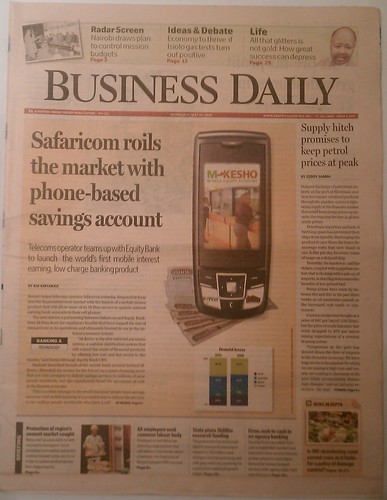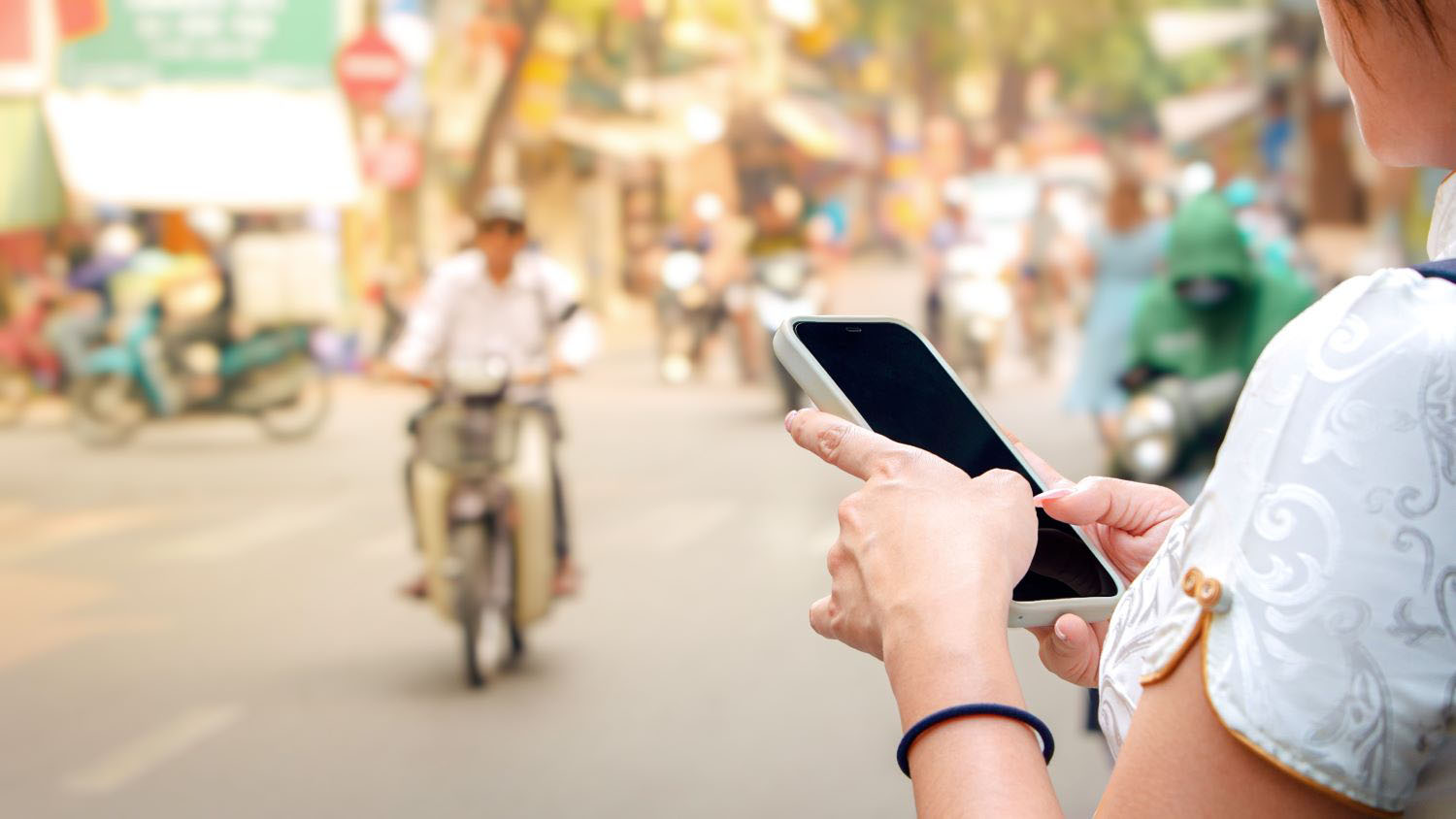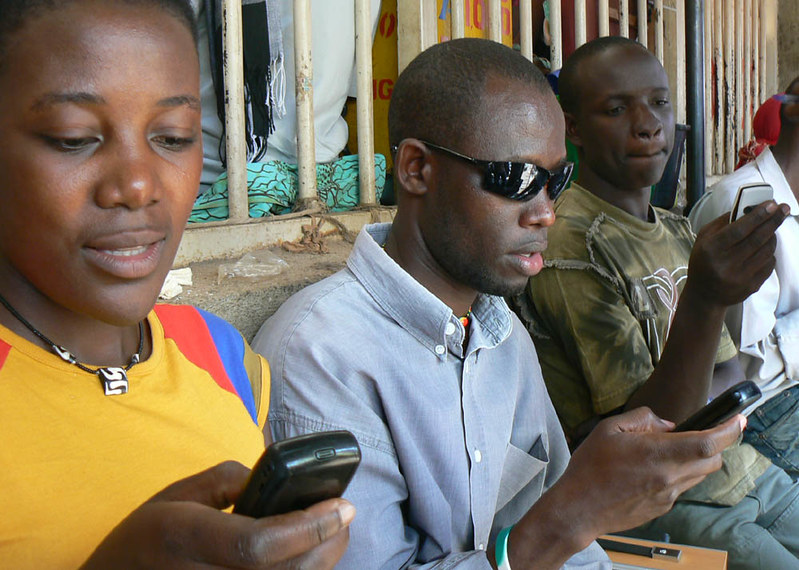May 21, 2010
This is the first post on my trip to Kenya to see M-PESA, the mobile phone--based money transfer service. Here's the full set.When the now-dominant methods of microfinance were developed circa 1980, they were what economists call technological breakthroughs. Although they were low-tech in the everyday sense of the word---involving meeting in person, paying in cash, keeping records on paper---they were nevertheless new ways to extract more value from a given amount of labor and capital. Well, not all new: as usual, innovation combined old ingredients in new ways and contexts. Since that revolution 30 years ago, microfinance has not changed so much. SKS in India does group microcredit much as Muhammad Yunus and his students invented it (albeit with a computerized back office). Compartamos in Mexico does village banking more or less as John Hatch and FINCA refined it.This week in Kenya, I glimpsed microfinance’s next technological revolution. The instance there is called M-PESA. And this revolution looks like what it sounds like: the M is for "mobile phone." (And pesa is "money" in Swahili.) If you have access to a phone subscribed to the Safaricom network, a joint venture of the Kenyan government and the mobile phone giant Vodafone, you can send money to almost anyone in the country. At the invitation of the Bill & Melinda Gates Foundation, I joined Robert Cull, Dean Karlan, Stuart Rutherford, Jonathan Morduch, and Dean Yang on a three-day tour that took us from Nairobi to Kisumu on Lake Victoria, from a rural market, where we strolled by lines of vegetable sellers seated in their stalls, to the wood-paneled meeting room of the Governor of the Central Bank, where we sat in grand chairs along an oblong conference table.Since inception in March 2007, M-PESA reached 9.5 million users, equivalent to a bit more than 40% of adult Kenyans. No microfinance institution has grown that fast; indeed only BRI, with 21.2 million savings accounts, has more customers. Under the leadership of Ignacio Mas, the Gates Foundation has thoroughly documented M-PESA. See this intro by Ignacio and Daniel Radcliffe on the blog of the Financial Access Initiative.M-PESA began as a project of Vodafone’s Corporate Social Responsibility (CSR) department, with the initiative of Nick Hughes. Interestingly in light of my asking whether microfinance is a Schumpeterian dead end, the original idea was to use phones to do microcredit transactions---disbursements and repayments---and not necessarily in Kenya. They were no doubt inspired by examples of mobile phone--based services in the Philippines and South Africa (which M-PESA has since eclipsed in scale). It was the Kenya affiliate that pounced on the idea, piloting it with the help of £1 million from the U.K.’s Department for International Development. The turned it from CSR to a dead-serious business project. As Ignacio tells it, trial users in focus groups said that the microcredit link-up was all very nice but could they also use it to send money to people far away? Millions of families in the Kenyan countryside send a member, perhaps most often a son or husband, to the city to make and send money home. Before M-PESA, physical transport of cash back to the provinces was tremendously costly and risky. One could spend a day or so taking it home oneself. One could get robbed on the way. One could pay informal money carriers, exposing oneself again to robbery as well as fraud. So, it emerged, there was a huge pent-up demand in Kenya for ways to send money home safely. Obviously, the Safaricom team picked up on this idea and ran with it. As a matter of history, this extraordinary new service, indisputably a healthy addition to the Kenyan economy, is an offshoot of microcredit. In Kenya, microcredit was not an evolutionary dead end.Not surprisingly, Safaricom marketed its mobile phone payments system as a way to "Send Money Home." The system can be used for far more than that—and increasingly is, probably more than anyone has imagined—but "Send Money Home" was the "killer app" that built the empire. Safaricom understood the network effect: the more people who use the system, the more who will want to; and, conversely, the fewer people use the system, the fewer who will want to. That argued for a big push at the start, which involved heavy marketing and signing up thousands of agents, the domestic equivalent of Western Union storefronts.Here’s how it works:This is an interesting video. The first part shows you how Safaricom wants Kenyans to think of M-PESA: just punch some buttons on your phone and money moves. That’s basically how I thought of it until last week: just like paying my water bill over the web. But of course the depicted phone-to-phone flow of cash is impossible. M-PESA’s slip, if you will, is showing. There’s a lot going on beneath the surface in order to execute on the seemingly simple idea of sending money by phone. Also interesting is that the man in the ad is an office worker in the formal economy, putting him in an elite minority. M-PESA is now used by millions of informal workers too, but it is has never been about serving the poorest.Before digging inside the system (in my next post), I’ll describe it more precisely from the outside. On Monday, the first place Ignacio, Jake Kendall, and Sheila Miller of Gates took us was Nairobi's Kawangware slum. Spotting M-PESA outlets was like counting fireflies on a summer evening. They were everywhere, all flashing the required bright green. Where we stopped, there were three in a row. Clearly it is a good business.I entered the shop on the left and opened an account. I pulled out my old Motorola GSM phone (GSM is the mobile phone standard globally and that used by AT&T and T-Mobile in the U.S.) and inserted a Safaricom SIM card, which gave it a Safaricom soul. The woman behind the grill, the agent, needed my passport for an ID number. I hope no Kenyan’s national ID number is the same as the first 8 digits of my passport number, because that’s what she took. Within a few minutes she had used software on her store’s phone to register me---and earned a nice commission from Safaricom. She added an entry to a log book and I signed it. I received a text message welcoming me and instructing me on how to complete the registration through my phone. This involved finding the M-PESA menu on the phone, was present thanks to software embedded on all Safaricom SIM cards. Bob Cull gave me 300 shillings, about $4, which I handed to her for deposit. More clicking on her phone, a row in another log added and signed, and I received a text message confirming the deposit. Here too she earned a commission behind the scenes but I paid nothing.After others had registered the same way, we passed around electronic money out in front of the stores, again using the M-PESA menu built into our SIM card. Someone (Dean Yang?) sent me the minimum 100 shillings and I sent it back. Each time the sender lost 30 shillings in commissions---pretty steep. Larger transfers are more economical. Each transaction triggered text messages to sender and receiver within seconds.I could have returned to any of the stores to withdraw. That, unlike depositing, would have incurred another commission. Notice this asymmetry. Taking cash in and pushing it out cost Safaricom and its agents about the same, which is why behind the scenes Safaricom pays agents for both. But people are evidently readier to accept fees when they withdraw than when they deposit, so the tariff conforms to that preference. My bank and its ATMs work the same way.Over that day and the next, we visited approximately all 16,000 M-PESA outlets. Or so it seemed. The repetitiveness of the experience was no accident: though much of the signage was hand-painted and idiosyncratic, the overall look and customer experience was consistent. Perhaps the majority of outlets did only M-PESA business, showing that it is generally profitable on its own, while others also sold phone airtime, Coke, and other items. At almost every outlet, we needed to scoot aside at times to avoid obstructing the flow of customers.A bit about what M-PESA is not and what it might become. The Gates people told me that the average M-PESA user is better-off, more urban, and more male than the average Kenyan. I don't know how old this information is. But it seems clear that M-PESA is not reaching the poorest people. On the other hand, it is certainly reaching millions who have no bank account, bringing a first taste of formal financial services to relatively poor people.M-PESA is also not a bank, meaning that it cannot on its own offer financial services other than money transfer--no interest-bearing savings or time deposits (like CD's) or loans. Perhaps the touchiest aspect of its operations from the point of view of the regulators (whom we met) is the way that the phones can store value---you can put money in and not immediately take it---which must make them bank accounts as far as many people are concerned. The regulators wisely gave Safaricom room to experiment and develop this new service, but required it to place all balances in safe commercial bank accounts and funnel interest earned into a non-profit foundation.Of great interest, as I wrote before, is whether M-PESA could nevertheless revolutionize financial services for the poor by radically cutting costs. Safaricom cannot bank, but it can connect people to banks. While we were there in fact, the company officially a partnership with Kenya's dominant microfinancier, Equity Bank, to embed access to the bank in Safaricom's SIM-resident software. With a few key presses, M-KESHO users can move mobile pesa into an Equity Savings account that pays interest. They can apply for loans too; their creditworthiness will be automatically "scored" on the basis of the last 6-months of the M-PESA history. And they can buy personal accident insurance. M-PESA looks set to bring formal financial services to millions more Kenyans, and perhaps break microfinance's traditional structural bias toward credit. This venture will no doubt be closely watched. Will it succeed? In what demographics?To see what a big deal this is in Kenya look at the front of Wednesday's Business Daily (click to enlarge): Yes, that's a graph of financial access data on the front page of a national business daily.
Yes, that's a graph of financial access data on the front page of a national business daily.
 Yes, that's a graph of financial access data on the front page of a national business daily.
Yes, that's a graph of financial access data on the front page of a national business daily.Disclaimer
CGD blog posts reflect the views of the authors, drawing on prior research and experience in their areas of expertise. CGD is a nonpartisan, independent organization and does not take institutional positions.





